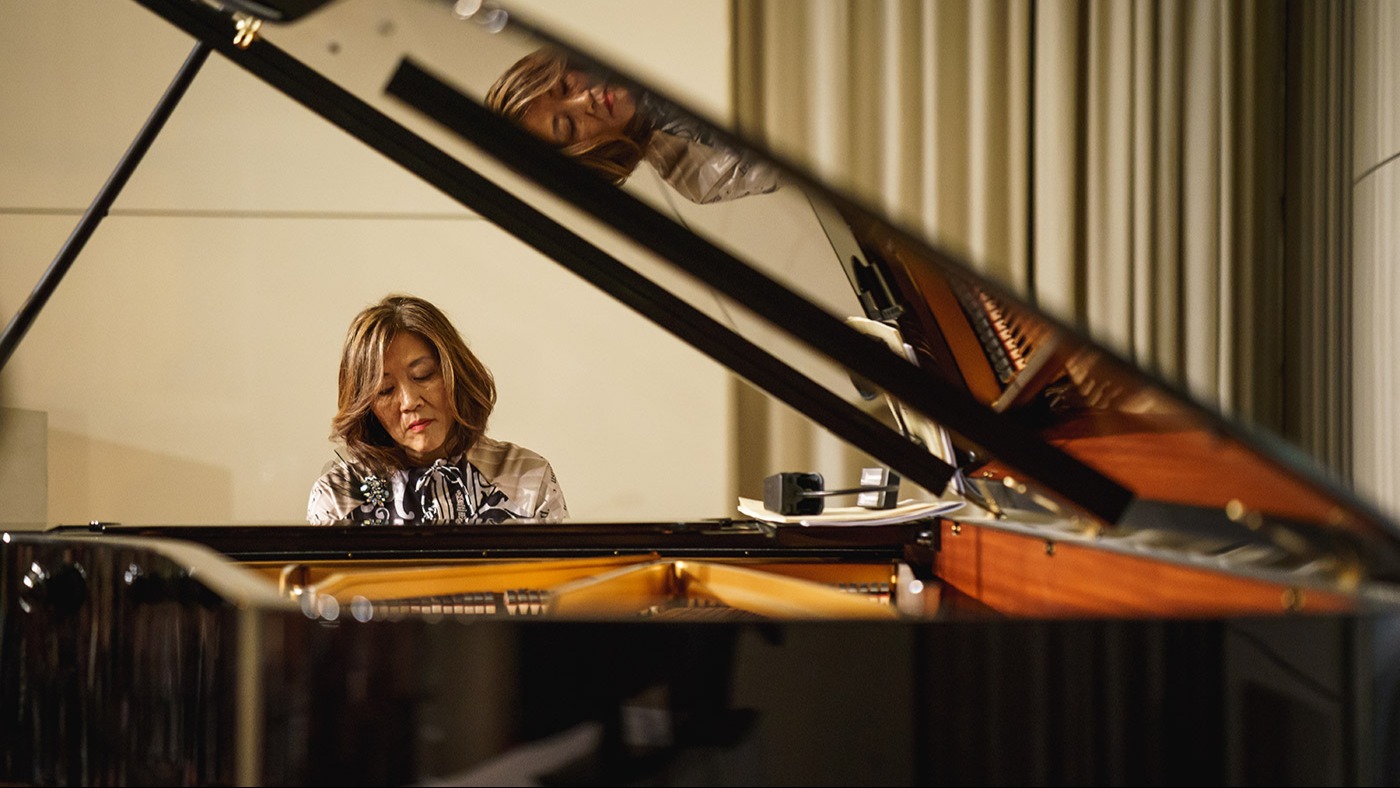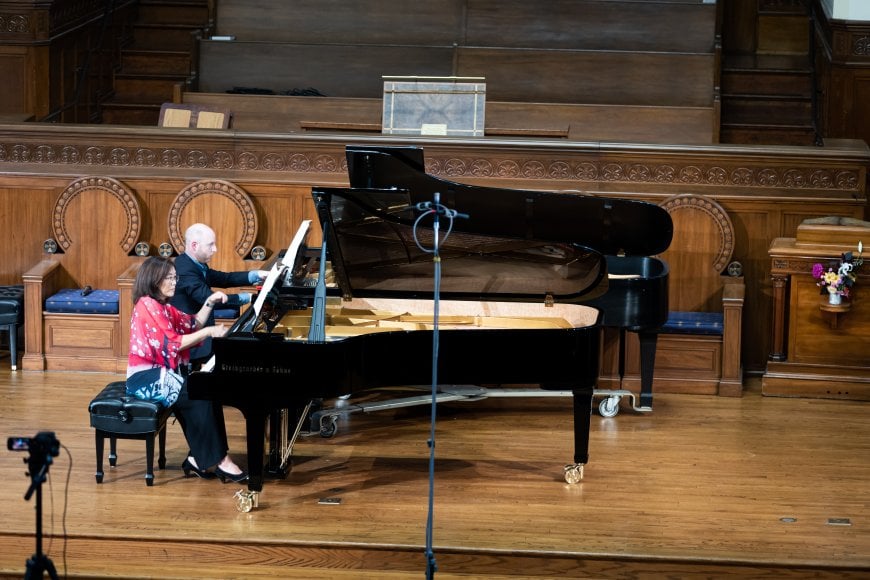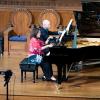
A single note, pressed twice — it’s the call of a bird so exhausted that he seems to be melting off the branch. Those two notes encapsulate the deceptively difficult timing and touch that a performance of Maurice Ravel’s Miroirs requires.
The piece was performed by pianist Gwendolyn Mok on Sunday, Aug. 24 at Old First Church as part of the 8th annual San Francisco International Piano Festival. As Mok articulated them, the first two notes foreshadowed the expressive character of her performance, in which she challenged the typically static, painterly notions of Ravel’s piano repertoire.
Miroirs is one of the most colorful piano sets the composer wrote, consisting of five impressionistic movements that evoke moths and birds, then the ocean and church bells. In a talk at the start of the concert, Mok drew the audience’s attention to what she considers the crucial thread of Miroirs: Ravel’s Basque heritage. She described her own recent pilgrimage in the region and pointed specifically to the Basque influence of the fourth piece, “Alborada del gracioso” (The jester’s morning song). This was clearly Mok’s favorite movement, as she created a much more expansive and confident sound than in the previous three. Transforming the piano into a guitar, her touch practically plucked at the keys. The sheer humor and thunder of this Basque celebration contrasted dramatically with its lyrical middle section, in which Mok resumed the light touch she brought to the other movements.
Mok took an expressive approach to the different pieces. While “Noctuelles” (Night moths) and “Oiseaux tristes” (Sad birds) seemed to evaporate under her fingers, with occasional notes and passages blurring, “Une barque sur l’ocean” (A boat on the ocean) was a veritable storm, with Mok turning the arpeggiated currents into towering waves. (Mok recalled an audience member in Amsterdam who told her that her playing had made him seasick.) While the ocean was clearly in view, equally awesome and terrifying, the poor ship was a bit buried; the calming treble melody that holds the movement together seemed an afterthought.
It was then that I realized that Mok’s talk about Ravel the Basque composer was more than historicization. Mok’s Ravel is no landscape, but a living, feeling character. She does not gaze at the horizon — she steers the very ship. Each elongated bird call was not the propulsive, imitative call I had expected but a more ghastly, ghostly version. This all became clear in the final piece, “La vallée des cloches”(The valley of bells), in which Mok transformed Paris’ bells into a metaphysical meditation, one in which the tumultuous emotion of the previous movements might finally find rest. If these were landscapes, in Mok’s hands they were interior ones, landscapes of the heart.
The unexpectedly perfect follow-up to Mok’s Miroirs was Jeffrey LaDeur’s performance of Déodat de Séverac’s Cerdaña, a rarely programmed work that sneakily clarified Mok’s expressive take on Ravel. Séverac, a contemporary of Ravel’s, similarly incorporated his southern French heritage in his music, especially in this suite of movements that depicts the ox-drawn carts, celebrations, and farmers of the border region, Cerdanya. In his own short talk before playing, LaDeur encouraged the audience not to ask “where is this going?” but to instead listen for an overarching structure built of sonorities and colors. This is the typical approach to French music of the early 20th century, particularly in the shadow of Claude Debussy. However, LaDeur’s thrilling performance seemed to make the opposite case by aligning with Mok’s emotion-baring take on Ravel.
The opening movement, “En tartane (L’arrivée en Cerdagne)” (In tartan: arrival in Cerdanya), introduced ox-drawn carts via a rumbling left-hand ostinato, after which “Esperanza,” the main musical theme, made a lovely, limping entrance. This unifying theme returns in all but one of the movements. As the individual movements went by, I realized that this “Esperanza” was a real character among the fields and rough roads of Cerdanya.

This was clearest at the cycle’s climactic fourth movement, “Les muletiers devant le Christ de Lliva (Complainte)” (The mule drivers before the Christ of Livia (Complaint)), when Séverac stages a dramatic confrontation between the drivers and the figure of Christ. LaDeur captured each detail of this musical script, impressively expanding his already dramatic dynamic range to combine both the earthy tread of the drivers with the echoing stones of the church. The religious feeling — particularly in the Old First Church with light pouring through stained glass windows — was undeniable, even if the final movement required LaDeur to awkwardly usher the drivers back onto the road with Séverac’s petty trills.
Later, I couldn’t help but wonder what it would’ve been like to hear Mok and LaDeur trade pieces — to hear LaDeur lend his expansive and precise voice to Ravel’s extra-fine portraits, and then to hear Mok bring her sensitive touch to the emotional journey of Séverac’s southern France. Despite the pianists’ discussion of colors and landscapes, it was Mok and LaDeur’s combined attention to the underlying expressive character of each piece that successfully highlighted the often overlooked, very human character of this repertoire.




